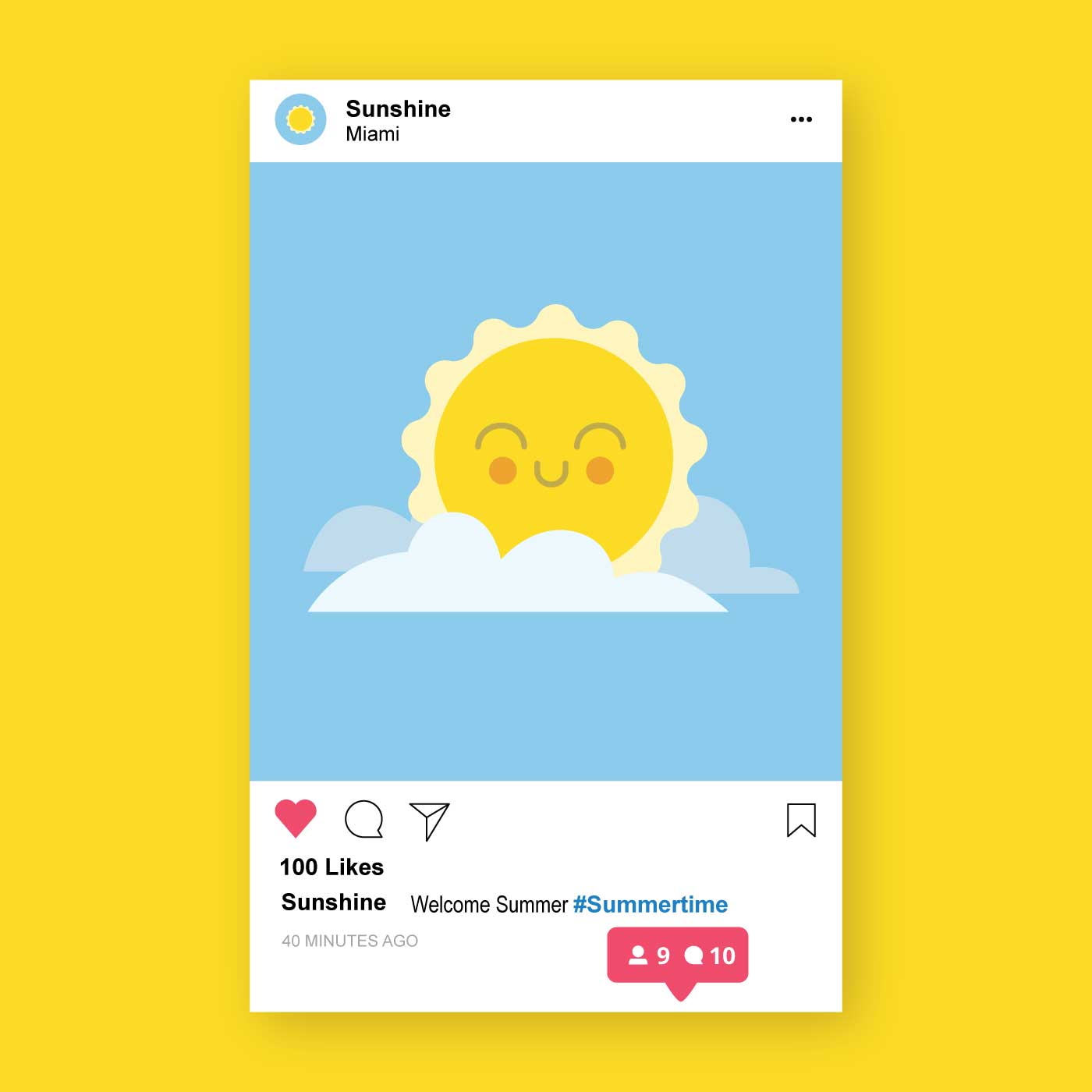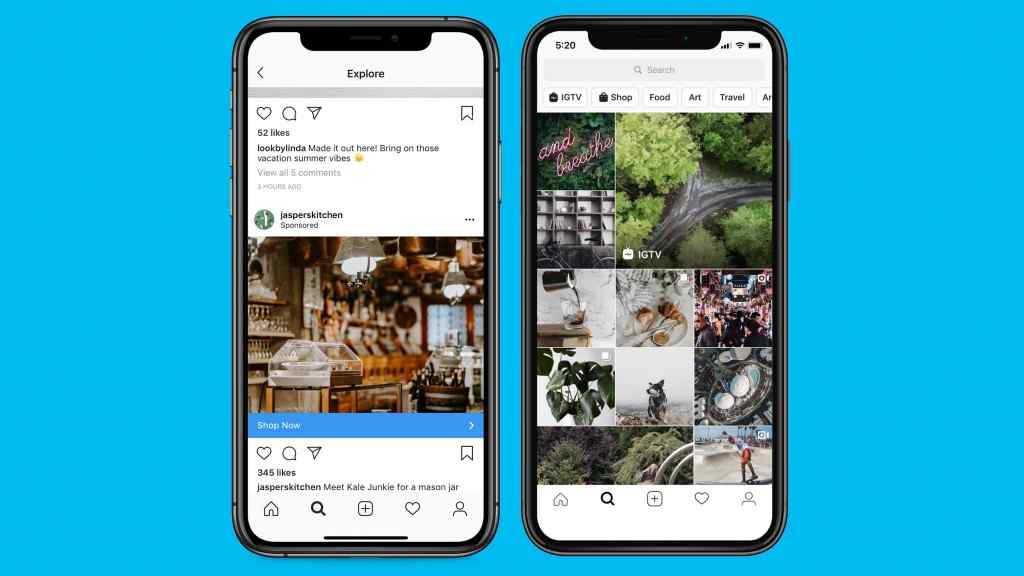Keep reading to discover more on how Instagram works this year.
How Instagram ranks Explore
Explore was designed to help people discover new things. The grid is made up of recommendations – photos and videos that Instagram finds for you – which is very different from Feed and Stories, where the vast majority of the content you see is from the accounts you follow.
Again, the very first step Instagram does is to define a set of posts to rank. To find photos and videos you might like, Instagram will consider signals like what posts you’ve liked, saved, and commented on in the past. For example, you’ve liked some photos from Cathay Bi (@dumplingclubsf) – a San Francisco dumpling chef. Instagram then takes a look at who else likes Cathay’s photos, and then what other accounts those people like. People who like Cathay may also be interested in the SF dim sum spot @dragonbeaux. In that case, the next time you open Explore, Instagram might let a photo or video from @dragonbeaux in front of your eyes. In practice, this means that if you’re interested in dumplings you might view related posts, like gyoza and dim sum, without Instagram’s necessarily understanding what each post is about.
When Instagram has found a group of photos and videos you might be interested in, they then order them by how interested we think you are in each one, much like how Instagram ranks Feed and Stories. The most effective way to guess how you love something is to predict how likely you are to do something with the post. The essential actions Instagram predicts in Explore include likes, saves, and shares. The most important signals they look at, in rough order of importance, are:
Important signals
-
Information about the post. Here, Instagram is looking at how popular a post is. These are signals such as how many and how quickly other people are engaging with this post. These signals matter way more in Explore than they do in Feed or Stories.
-
Your history of interacting with the person who published. Most likely the post was published by someone you’ve never heard of, but if you have interacted with them that Instagram will get a sense of how interested you might be in what they shared.
-
Your activity. These are signals like what posts you’ve liked, saved, or commented on and how you’ve engaged with posts in Explore in the past.
-
Information about the person who posted. These are signals like how many times people have interacted with that person in the past few weeks, to help find compelling content from many people.
You don’t follow the people you view in Explore, which changes the dynamic when you come across something problematic. If you view offensive content that is shared by your friend in your Feed, that’s between you and your friend. If you see something offensive in Explore from someone you don’t know, that’s a totally different situation.
That’s why, in addition to our Community Guidelines, Instagram has rules for what we recommend in places like Explore. It’s known as Recommendations Guidelines. These include things like avoiding potentially upsetting or sensitive posts, for example, Instagram avoids showing content that promotes tobacco or vaping use in Explore.
How Instagram ranks Reels
Reels are designed to entertain you. Much like Explore, almost what you see is from accounts you don’t follow. So Instagram goes through a very similar process where they first source reels they think you might like, and then order them based on how interesting Instagram thinks this content is to you.
With Reels, though, Instagram specifically concentrates on what might entertain you. Instagram survey people and ask whether they find a particular reel interesting or funny, and learn from the feedback to find out what will entertain people, with an eye towards smaller creators. The most important predictions Instagram makes are how likely you are to watch a reel all the way through, like it, say it was entertaining or funny, and go to the audio page (a proxy for whether or not you might be inspired to create your own reel.) The most important signals, roughly in order of importance, are:
Important signals
-
Your activity. Instagram considers things like which reels you’ve liked, commented on, and engaged with recently. These signals allow Instagram to understand what content might be relevant to you.
-
Your history of interacting with the person who published. Like in Explore, it’s likely the video was made by someone you don’t know. However, if you have interacted with them that Instagram gets a sense of how interested you might be in the content they posted.
-
Information about the reel. These are signals about the content with the video such as the audio track, video understanding based on pixels and whole frames, and popularity as well.
-
Information about the person who posted. Instagram considers popularity to find compelling content from a ton of people and give everyone an opportunity to find their audience.
The same Recommendation Guidelines that apply to Explore apply to Instagram reels. Instagram also avoids recommending reels for other reasons, such as low-resolution or watermarked reels, or reels that concentrate on political issues or that are made by political figures, parties, or government officials – or on their behalf.
“Shadowbanning”
People often accuse Instagram of “shadowbanning” or silencing them. It’s a broad term that people use to express many different experiences they have on Instagram. Instagram recognizes that they haven’t always done enough to explain why they take down content when they do, what is recommendable and what isn’t, and how Instagram works more broadly. As a result, Instagram understands people are inevitably going to come to their own conclusions about why something happened, and that those conclusions may leave people feeling confused or victimized. Instagram also manages many reports a day, which means making a mistake on even a small percentage of those reports affects tons of people.
People see that their posts getting fewer likes or comments as a form of “shadowbanning”. You’ll consistently engage the same number of people when you post. The truth is most of your followers won’t see what you publish because most look at less than half of their Feed. But Instagram can be more transparent about why they take things down when they do, work to make fewer mistakes – and fix them quickly when they do – and better explain how our systems work. Instagram is developing better in-app notifications so people know at the moment why, for instance, their post was taken down, and exploring ways to let people know when what they post goes against our Recommendations Guidelines. They will have more to share soon, and Instagram will also go more in-depth on these topics in this series.
How you can influence what you see
How you use Instagram heavily impacts the things you see and don’t see. You help improve the experience simply by engaging with the profiles and posts you enjoy, but there are a few more explicit things you can do to influence what you see.
-
Pick your Close Friends. You can choose your close friends for Stories. This was designed as a way to let you share with just the people closest to you, but Instagram will also prioritize these friends in both Feed and Stories.
-
Mute people you’re not interested in. You can mute an account if you’d like to stop seeing what they share, but are hesitant about unfollowing them entirely. This way, others don’t know you’ve muted them.
-
Mark recommended posts as “Not Interested.” Whenever you see a recommendation, whether it’s in Explore or in Feed, you can indicate you are “not interested” in that post. Instagram will do our best not to show you similar recommendations in the future.
Showing more context on how content is ranked, shown, and moderated on Instagram is only one part of the equation. There is more Instagram can do to help you to shape your Instagram experience based on what you like. Stay tuned.


